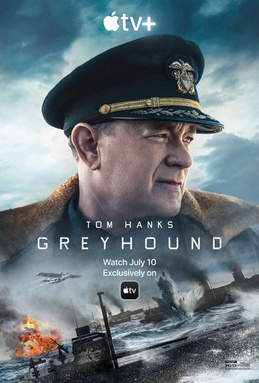Process is Protagonist in Greyhound
It was in the closing seconds of the 2020 movie Greyhound, as we pan out to a shot of the wide ocean and the battle-weary remnants of a convoy of Allied destroyers, that I wondered for the first time in roughly an hour and a half, "was this shot on a boat or a set?"
And that's because Greyhound is one of those movies that makes you forget you're watching a movie for a while. With its meticulous realism, and a whole bunch of close-ups of an underplayed and very effective performance by Tom Hanks, this movie reminds me of some of the more intense war scenes from Band of Brothers and Saving Private Ryan. Except, the whole movie is the intense war scene.
Paradoxically given it's expansive ocean setting, this movie unfolds in a very small space- with a few small exceptions, the human perfomances in this movie take place in the chart house, the plotting room and the pilot house (and the decks to its port and starboard) of a Fletcher-class WW2 destroyer. Three operations cabins in a warship is not a lot of space. The warship, by the way, is the USS Keeling, and not Greyhound. The latter is is its radio callsign.
Tom Hanks, who also wrote and directed, does the thing that he does with these WW2 movies, where he represents the Greatest Generation as this stoic, quietly heroic bunch who squint into middle distance, jaw set, as the world flings shit at them. And it works, because the movie is really about this crazy idea that humans have, that we're going to put a bunch of people on a moving metal machine and have them float about on the ocean and chuck explodey things at other bunches of people on other moving metal machines. Its a process movie. Its about how a ship like this operates. The process is the protagonist in that it is about a team, an organizational subunit, if you will, conducting its first crossing of the Atlantic under their new captain, the aforementioned stoic. This movie reminded me in some ways of the Aubrey-Maturin series. There too, an insistence on not explaining the naval jargon is a specifc rhetorical strategy that I believe improves the overall narrative experience. The opacity of the language helps convey the special and exclusive knowledge and practices that the crew of this ship have, a common understanding of the USS Keeling that helps them in their deadly dealings with a kriegsmarine wolfpack.
I enjoyed watching it. I've heard it called a dad movie. Can confirm.

Comments
Post a Comment